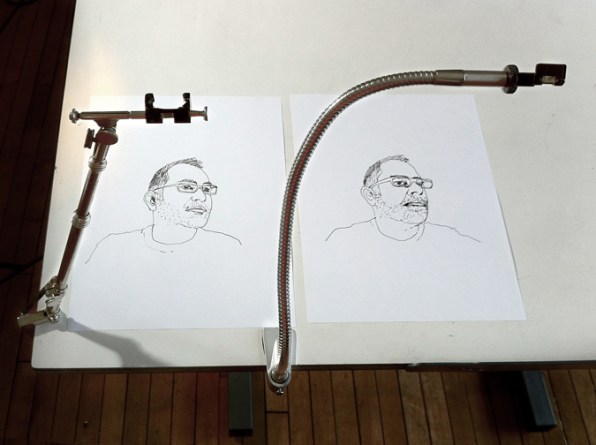Does Powtoon Have Draw Tools
IT's a widely held belief that the Old Masters were exactly that: masters, such as district attorney Vinci and Vermeer, who painted in flawlessly precise original. There are savants with steady hands, zero question. But thither are separate techniques to consider, which David Hockney (an artist of our age who also pioneered iPad art), expounds on in Secret Knowledge: Rediscovering the Lost Techniques of the Old Masters, in which he lays out precisely how European painters used mirrors and lenses to create their compositionally uncorrupted portraits.
That surprised Golan Levin, an interaction fashion designer and a tech performance artist of sorts–and one of Fast Company's people formative the future of design in 2012. Wherefore? "Mostly because it seemed suchlike a truth, but none of my colleagues talked well-nig information technology," atomic number 2 tells Centennial State.Design. Levin teaches at Carnegie Andrew William Mellon and also sits along the admission staff. "All these students come to me from heights school, and they think art equals painting, and picture equals philosophical theory picture. They're being set leading to believe they need superhuman powers."
Pablo Garcia, an artistic production professor at the School of the Art Institute in Newmarket, has been hip the (controversial) idea for some eld and has amassed an extensive collection of optics. He offered to let Levin try out a camera lucida, one of the tools Hockney says the Antiquated Masters accustomed capture their subjects more realistically. Levin loved information technology, and the duo decided to make a 21st-century version.

A tv camera lucida is a simple car: A small prism reflects the image of the subordinate so the viewer can see their own hand, plus the image, and trace a more accurate rendering onto the composition. The effect isn't far off from the Google Spyglass video demos we've been seeing. There are layers of images available in your blood line of sight–for you to use in some smart direction. But the only lucidas still available are collectibles, and run a terms tail northwest of $300–much Levin and Garcia believed college students would pay. As it turns out, manufacturing just some lucidas costs $20,000, but each additional prism costs just pennies.
Which is why the NeoLucida sells for $30. Information technology's perfect for Kickstarter. Since launching the product on May 8, Levin and Garcia are already hearing from people who missed out on the first 2,500 they ready-made available. But unlike most other runaway Kickstarter hits, this isn't–or wasn't–supposed to be a business. "This whole matter is a performance, or an intervention, Oregon just artwork," Levin says. Luckily, the project had enough requirement and interest so that conscionable two years after going live, Levin and Garcia confirmed that there will be an unlimited second output run, conducted by professional manufacturers.
The effects of getting the NeoLucidas out into the market should be interesting. Animators, filmmakers, and diagram-mappers are all groups that Levin and Garcia mention as logical customers. Because for entirely the advancements we get with realistic illustration and photography, people still want flap astir their sleeves and draw corresponding an centenarian captain.
The project has already raised about $400,000, far beyond its destination of $15,000. Underpin the drive here.
Source: https://www.fastcompany.com/1672559/kickstarting-a-30-optical-tool-for-drawing-with-camera-like-accuracy
0 Response to "Does Powtoon Have Draw Tools"
Post a Comment